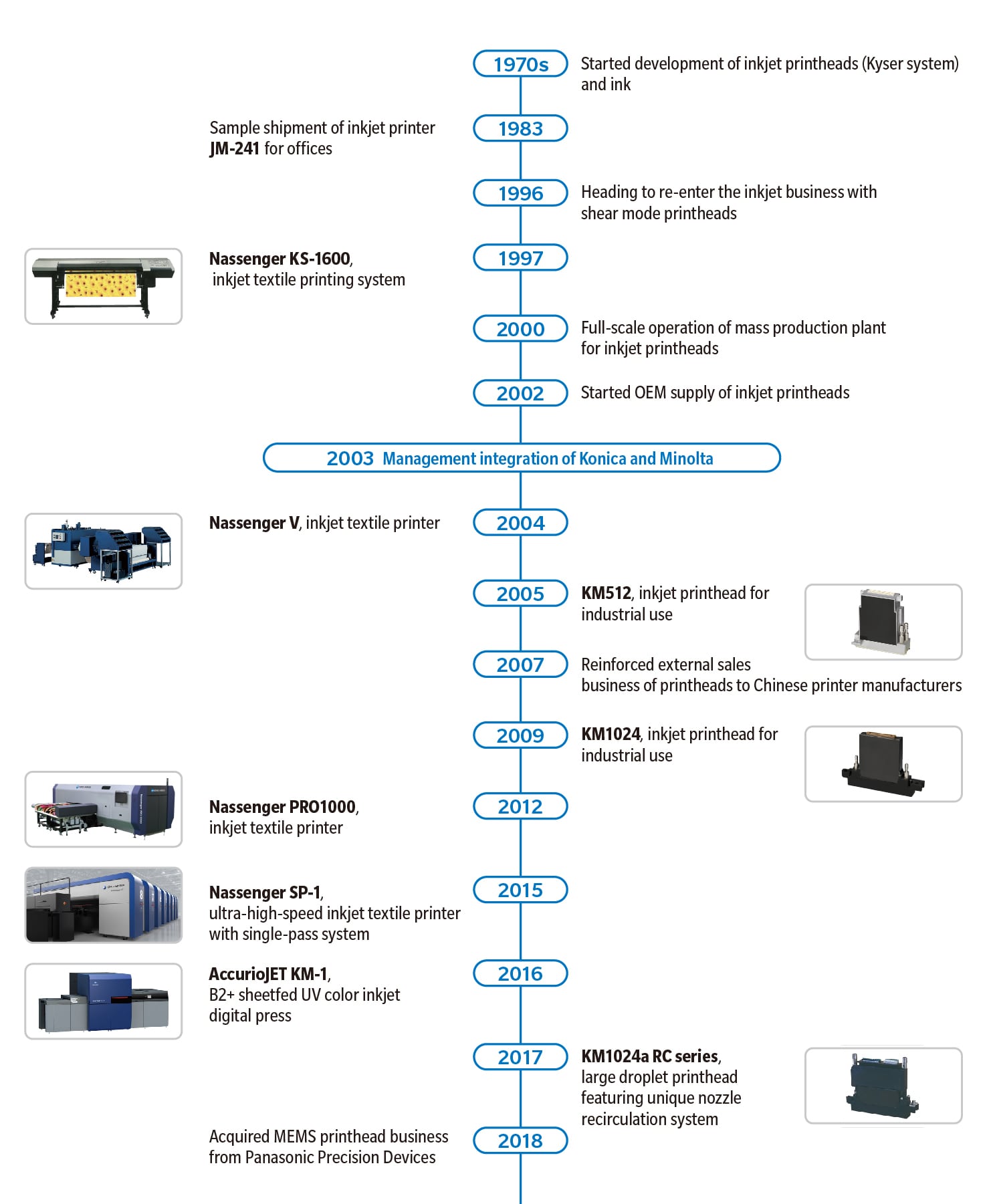INNOVATION STORIES
INDUSTRIAL INKJET
Working with customers to solve their problems in the inkjet business
Refining printhead, ink, and printer technologies through coordination
- INDEX
Inkjet technology enables direct printing by ejecting tiny droplets from nozzles. The technology can be applied to various fields because the printing is non-contact. We entered the business in the 1970s for office printers. We withdrew from the business once, but then re-entered it when we developed a textile printer.
At present, the mainstay of our inkjet business is external sales of inkjet printheads*, which are the culmination of our capabilities to coordinate different technologies refined through our business operations. We aim to encourage the use of inkjet printing in manufacturing by supplying high-performance printheads for various applications.
* Inkjet printhead: An important component of inkjet printers, it refers to an actuator to eject ink droplets.

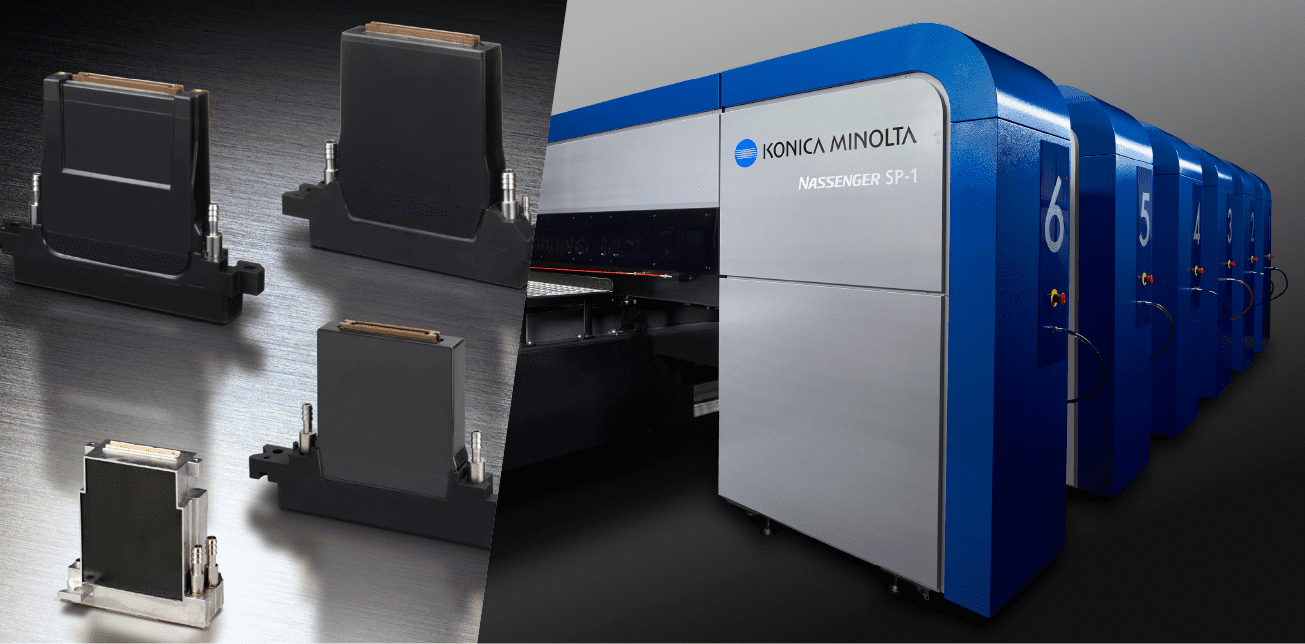
A shift from paper to textile, a market that will definitely grow
The history of our inkjet business dates back to the 1970s, when we were developing office printers and embarked on joint development with a company that had patents on printhead technology. Subsequently, we started developing the printhead in-house. In 1983, we shipped samples of the Konica Inkjet Printer JM241. Later, we withdrew from the business as we selected and concentrated on others, but re-entered the market in 1996. Why did we decide to tackle the inkjet printer market again? The reason was because we considered that another imaging technology was needed for outputting graphical images, in addition to silver halide photography. At that time, many companies were starting to enter the inkjet printer market in anticipation of demand for printing digital photographs.
When we fabricated a prototype for printing large-format posters at first, the textile and textile printing industries showed interest against our expectations. In conventional textile printing, a printing plate is created for each color, and inks are then rubbed onto the textile through the plate using a squeegee. In contrast, in textile printing using inkjet printers, inks are printed on the fabric following the pattern directly. Thus, textile printing offers advantages such as elimination of the need for plates, and the ability to handle small-lot production and quick delivery. We started developing technologies with textile printing in mind, believing that the market would surely grow.
At that time, an interior manufacturer in Osaka, which manufactured seat covers for rolling stock, was looking for an efficient way to produce small-lot orders, so we decided to jointly develop an inkjet printer exclusively for textile printing. In 1997, we marketed the first textile printer, Nassenger KS-1600.
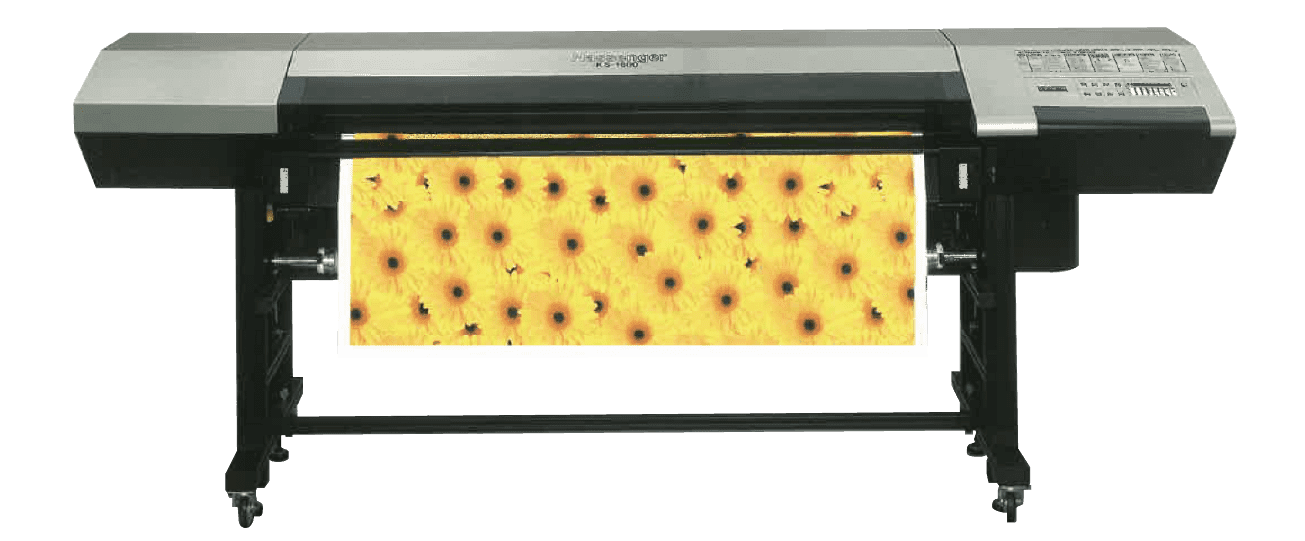
After continuing to work on in-house development through trial and error, our efforts bore fruit with the release of the Konica Minolta Nassenger V in 2004. A textile printing company that manufactured luxury brand scarves in Italy, which is renowned for its fashion industry, purchased 10 units in a single order. That convinced us of the shift to inkjet in the textile printing industry.
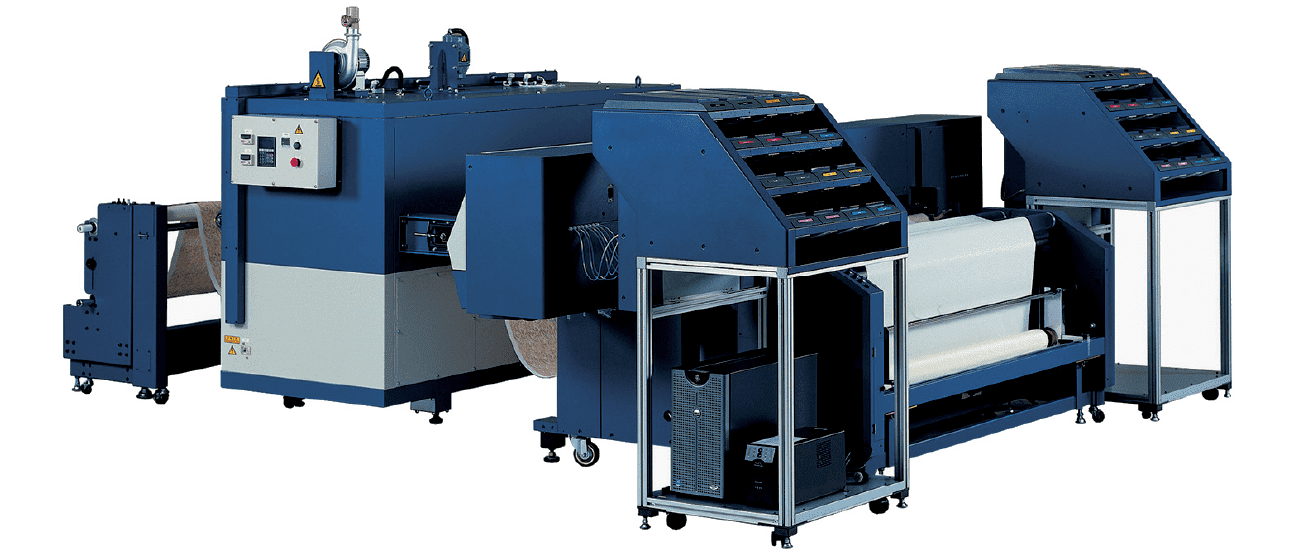
The top printing speed of the Nassenger V was 60 m2/hour, among the fastest for a textile printer but rather slow compared to conventional textile printing. The speed of the Nassenger SP-1, which was released 11 years later in 2015, increased up to 6,400 m2/hour. This model delivered equivalent speed and high-quality printing comparable to conventional textile printing, and has been used by European clothing manufacturers in particular.
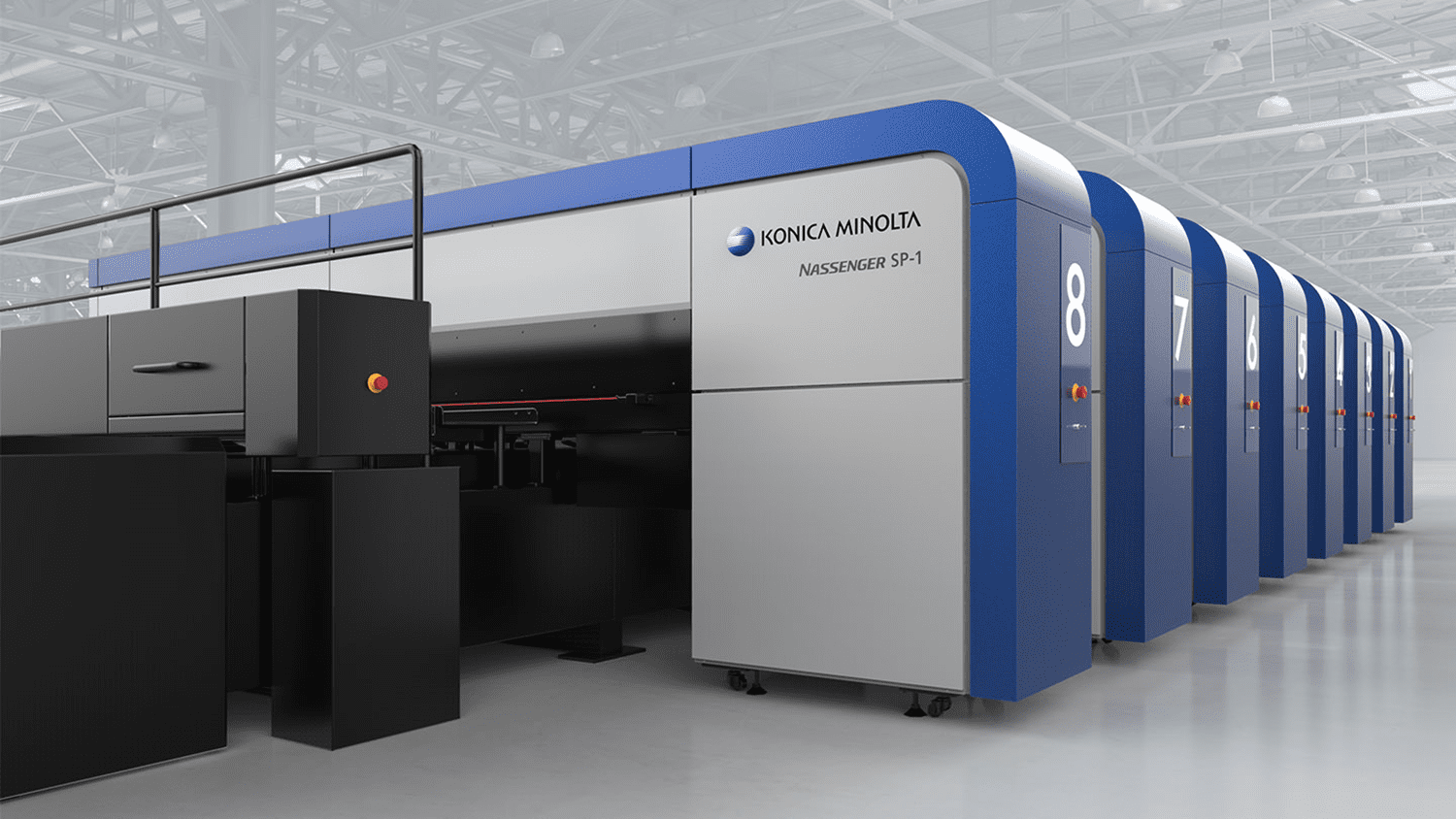
Inkjet textile printing still accounts for only a few percent of the entire textile printing market. However, inkjet textile printing has attracted attention for conserving resources and energy because it is possible to produce only as much as needed, requires no plates, and minimizes wastewater. Accordingly, the technology is expected to keep developing to reduce the environmental impact of the textile industry.
Printhead technology refined through a series of OEM supply arrangements
The development of textile printers was made possible by mobilizing in-house human assets. To develop the inks, we had experts in chemistry with a background in silver halide photography. To design the printers, we had engineers who had developed copiers. For the printheads, we acquired cutting-edge technologies by utilizing the patents of another company. It should be noted that the groundwork was laid by members who had been involved in developing office printers before.
In 1999, three years after re-entering the market, we established the Ink Jet Technology Business Center. Inkjet-related human assets and technologies, which had been allocated to different business divisions, were mobilized to create a development system which enabled sophisticated coordination of printhead, ink, and printer technologies. The respective technologies have been improved in stages in line with technological changes, and the combination of the three technologies is our biggest strength.
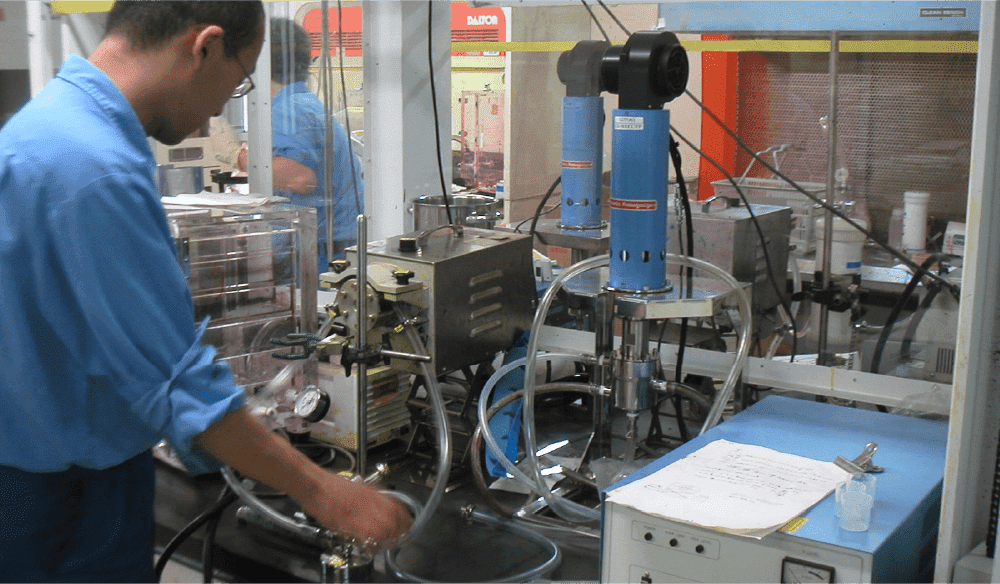
After re-entering the market, we manufactured printheads for our own printers. Later, a request from an optical equipment manufacturer, which was located near our inkjet business site in Hino City, Tokyo, offered an opportunity to start selling them externally. Our development personnel visited the customer every day almost like resident engineers. We succeeded in developing a printhead for large-format printers that met the quality and speed requirements, and started OEM supply around 2000. The business did not grow in size, but the engineering experience acquired through this project contributed greatly to our printhead business later.
Later, we also received a request for OEM supply of printheads from a different industrial inkjet printer manufacturer. The requirements were highly demanding: we had to make the printhead more compact than that of another supplier which the manufacturer was using. We had to double the density of the nozzles, halve the printhead length, and reduce the size of the ejected ink droplets to one third that of the original printhead. In addition, the delivery period was extremely short.
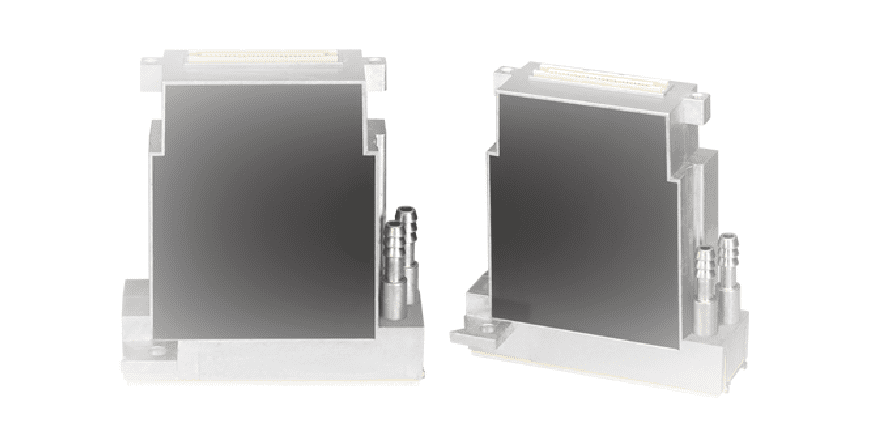
“Can you do it? Are you going to accept the order?” The printhead development personnel, who were informed of the request by phone from our negotiators, succeeded in delivering a sample to the printer manufacturer in only two weeks, which boosted the confidence of the manufacturer.
During the development, we also learned that the customer had been plagued by clogging of ink purchased from a supplier. Our engineers in charge of ink took immediate action, going above and beyond the call of duty. They analyzed the components of the ink, identified the cause of clogging, proposed improvements to the ink supplier, and solved the problem. This was made possible by coordinating technologies between the printhead and ink developers. “We slightly improved the ink and took it to the adjacent laboratory, which conducted tests immediately. Our ability to repeat this cycle was a great advantage.”
The printer that incorporated this printhead was marketed as a large-format printer capable of producing the most vivid black in the world and was used for printing sign graphics, including outdoor signboards, in various countries, and became a big hit. The external sales business of printheads was gradually established through these efforts.
Opening up the market by solving problems together
Our inkjet business is not just about selling products. Our engineers visit customers’ development sites and solve problems together. We demonstrated this attitude of co-creation with customers when we launched the printhead external sales business in the Chinese market.
In 2005, China was a highly promising market in the inkjet business. Many large sign graphics were displayed on streets. There was growing momentum to use inkjet for printing of sign graphics, leading to many startups making inkjet printers. However, the market was chaotic because there were few printhead suppliers.
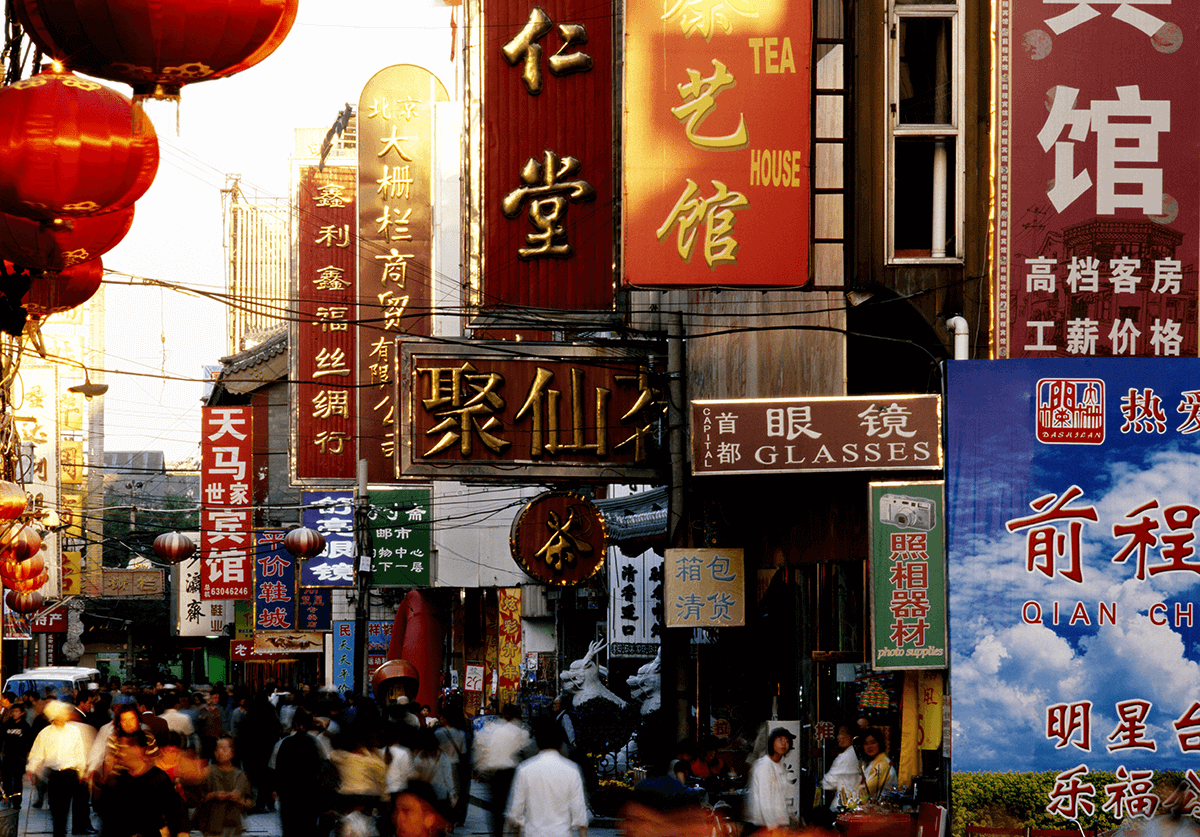
The Chinese market was opened up by a group of our staff members, which was nicknamed “the China pioneering team ” in the division. First, the person responsible for sales and engineers traveled around China to find co-creation partners who fully understood the difficulties of inkjet technology and who were committed to manufacturing good products. Our engineers gained the trust of customers by frequently visiting the sites in person and helping them develop printers. Our robust printheads and compatibility with various types of ink helped boost our market share.
The printhead business with Chinese customers is still an important pillar of our business. We established engineering service centers near customers to build a system for supporting the expansion of applications and quality improvement. Our business model that does not simply focus on selling products remains unchanged, even though the engineering level of Chinese manufacturers has now risen.
Our printheads are compatible with various types of ink and use common chassis. The extensive lineup is the result of our strategic efforts to commercialize printheads customized to customers’ requests to use specific types of ink. The common printhead chassis enables just the printhead to be replaced, without having to review the printer design for different types of ink. These features were made possible by our approach of working with customers at their development sites.
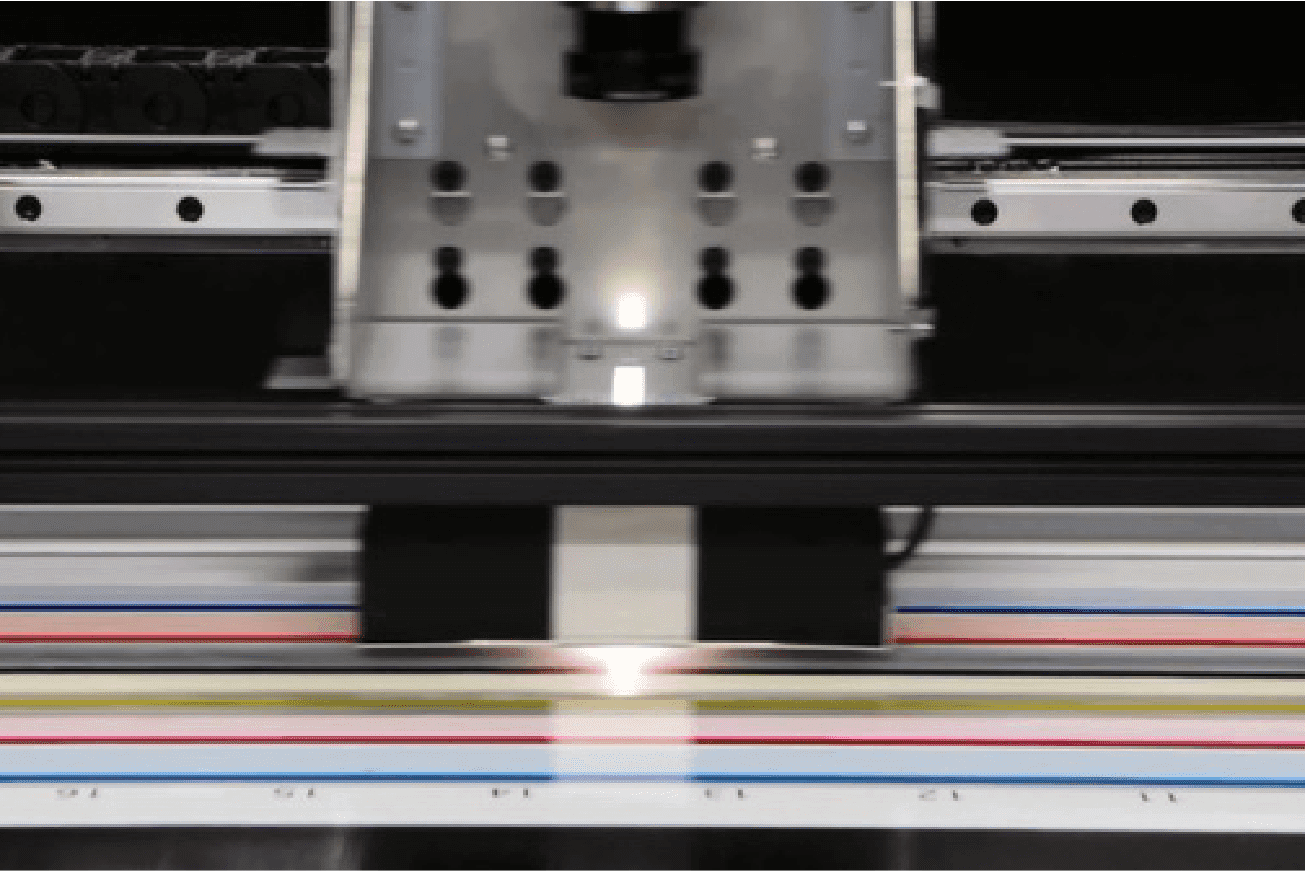
Our printheads continue to evolve for higher resolution and faster printing. We have been developing various types of ink, including water-based ink, solvent-based ink, UV ink which solidifies when exposed to UV rays, and dry process ink, for different printing materials. We still continue to coordinate our printhead, ink, and printer technologies.
We are currently expanding the scope of applications to commercial printing and flexible packaging as well as industrial usage, including the manufacture of construction materials, printed circuit boards, and displays under the motto of “leading the shift to inkjet in manufacturing and revolutionizing the workflow of customers.” We remain committed to solving customers’ problems, which we have been consistently doing for 50 years in our inkjet business, for customers in all markets.
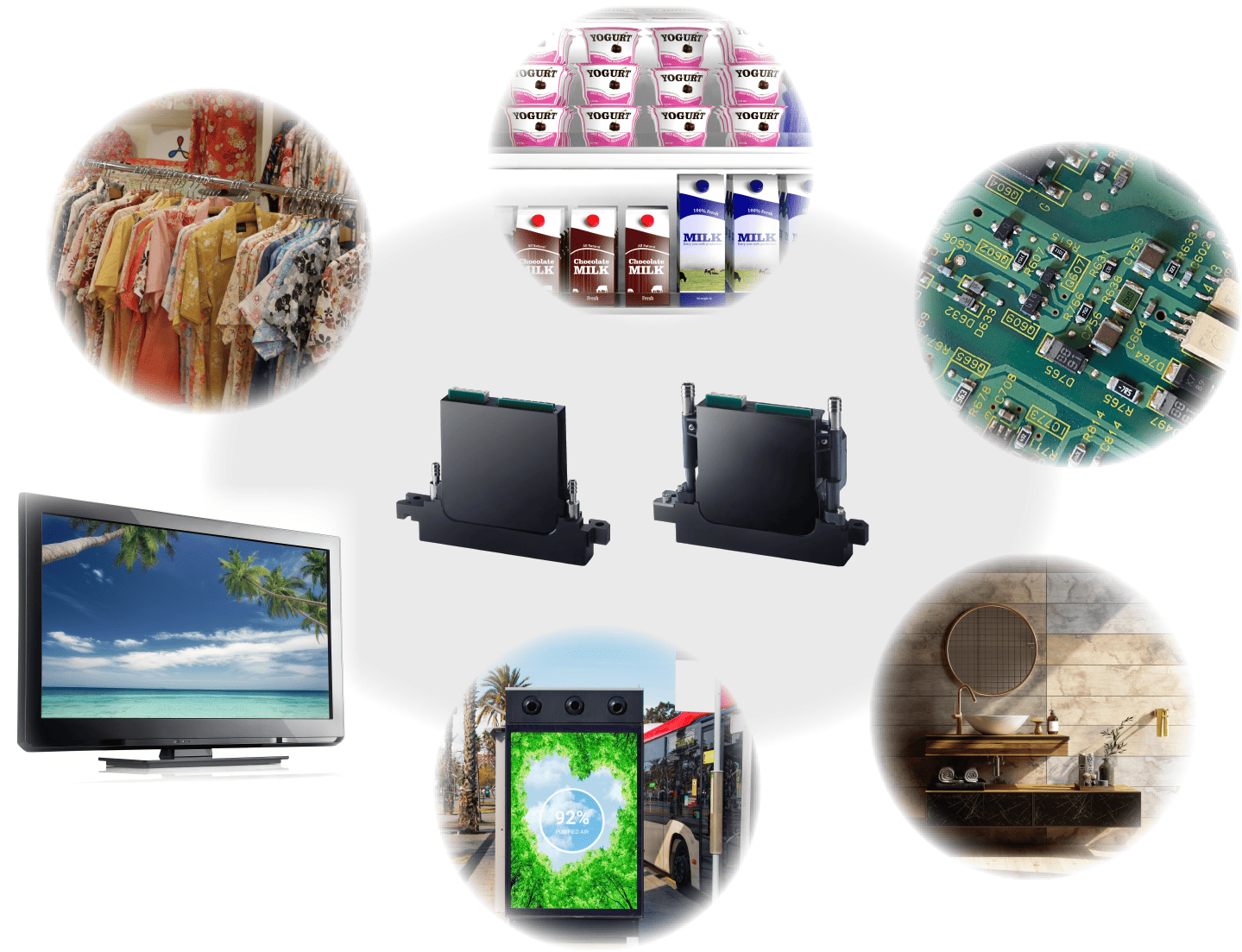
In the interest of clarity, “Konica” and “Minolta,”—the trade names that were used before the merger that formed “Konica Minolta”—are used throughout this text. Each company underwent a number of name changes throughout their history.
